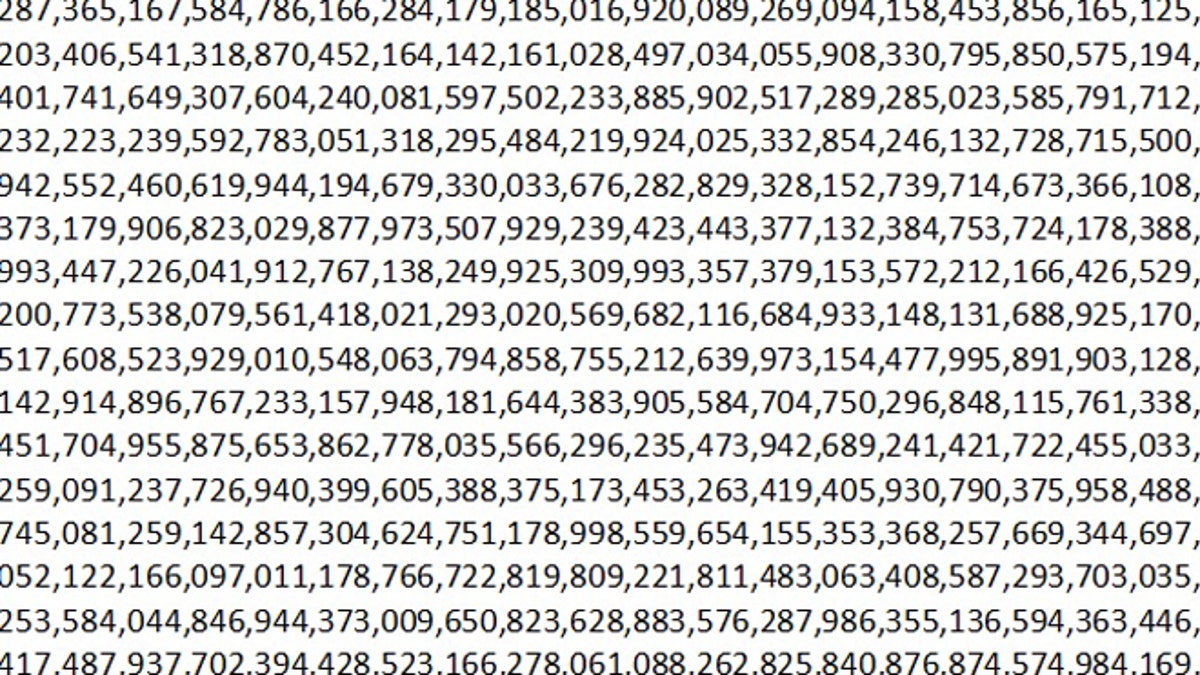
A small portion of the 17 million digits in the number 2 multiplied by itself 57,885,161 times minus 1 -- the first Mersenne prime discovered in four years. (FoxNews.com)
Editor's Note: Due to an editing error, an earlier version of this story omitted part of the calculation for the new prime number, correctly described below as 2 multiplied by itself 57,885,161 times minus 1.
If diamonds are a girl’s best friend, prime numbers are a mathematician’s.
And Curtis Cooper at the University of Central Missouri in Warrensburg has just found the biggest, shiniest diamond of them all.
As part of the Great Internet Mersenne Prime Search (GIMPS), a computer program that networks PCs worldwide to collectively hunt for a special type of prime number, Cooper discovered the largest prime number yet late last month: a beast with 17,425,170 digits.
The number -- 2 multiplied by itself 57,885,161 times minus 1, written mathematically as 257,885,161-1 -- is the first prime discovered in four years.
Though there is little mathematical value to finding a single new prime, these rare numbers are prized in their own right by some. "It's sort of like finding a diamond," Caldwell told New Scientist. "For some reason people decide they like diamonds and so they have a value. People like these large primes and so they also have a value."
You can see an abbreviated version of the new prime number, or download all 17,425,170 digits in a massive, 22MB text file.
Finding a new prime number, a number divisible only by itself and one, has little mathematical importance, New Scientist said. Yet the quest for the oddities has long fascinated amateur and professional mathematicians.
The first prime numbers are 2, 3, 5, 7, 11, and so on. The number 10 is not prime because it is divisible by 2 and 5, for example. There are an infinite number of primes: The curious or numerologically inclined can peruse a list of the first 50 million primes online.
Mersenne primes like Cooper’s were named for the French monk Marin Mersenne, who studied these numbers more than 350 years ago. The GIMPS project has discovered all 14 of the largest known Mersenne primes.
A Mersenne prime is of the form 2P-1, where the variable P is itself a prime -- making the Mersenne an elite sort of prime, a James Bond among spies. The first Mersenne primes are 3, 7, 31, and 127 corresponding to P = 2, 3, 5, and 7, respectively, the GIMPS website explains.
There are only 48 known Mersenne primes.
